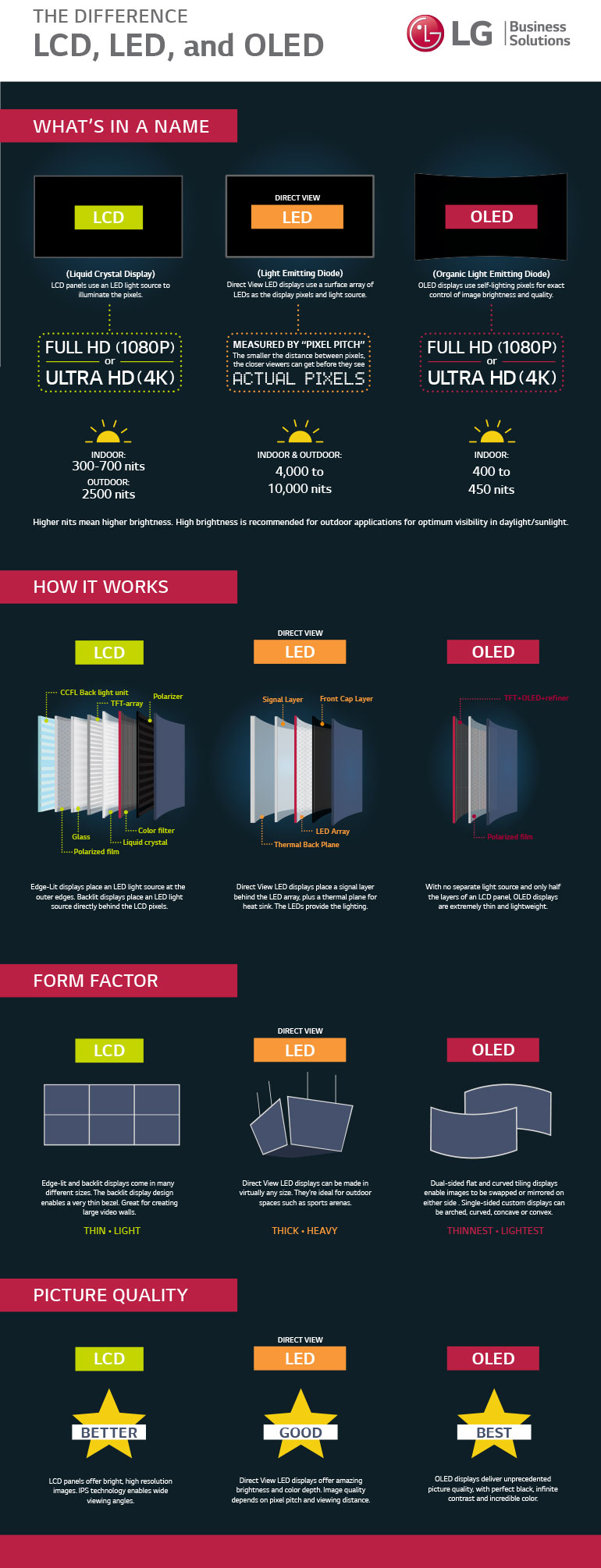Infographic The Difference in LCD, LED and OLED
What’s good, better and the best display option for your teams.
By Insight Editor / 2 Sep 2022
By Insight Editor / 2 Sep 2022
Life is better in color. Discover how different LG® LCD, LED and OLED displays are and what’s best for your workforce.
Accessibility note: The infographic is transcribed below the graphic.

Infographic text included for screen readers:
LCD panels use an LED light source to illuminate the pixels
Direct View LED displays use a surface array of LEDs as the display pixels and light source
OLED displays use self-lighting pixels for exact control of image brightness and quality
Higher nits mean higher brightness. High brightness is recommended for outdoor applications for optimum visibility in daylight/sunlight.
Edge-Lit displays place an LED light source at the outer edges. Backlit displays place an LED light source directly behind the LCD pixels.
Direct View LED displays place a signal layer behind the LED array, plus a thermal plane for heat sink. The LEDs provide the lighting.
With no separate light source and only half the layers of an LCD panel, OLED displays are extremely thin and lightweight.
Edge-lit and backlit displays come in many different sizes. The backlit display design enables a very thin bezel. Great for creating large video walls.
Direct View LED displays can be made in virtually any size. They’re ideal for outdoor spaces such as sports arenas.
Dual-sided flat and curved tiling displays enable images to be swapped or mirrored on either side. Single-sided custom displays can be arched, curved, concave or convex.
LCD panels offer bright, high resolution images. IPS technology enables wide viewing angles.
Direct View LED displays offer amazing brightness and color depth. Image quality depends on pixel pitch and viewing distance.
OLED displays deliver unprecedented picture quality, with perfect black, infinite contrast and incredible color.

Discover reports, stories and industry trends to help you innovate for the future.